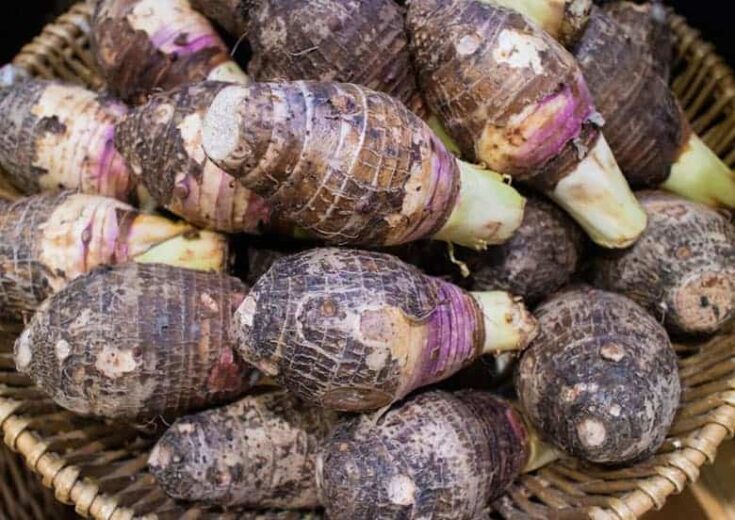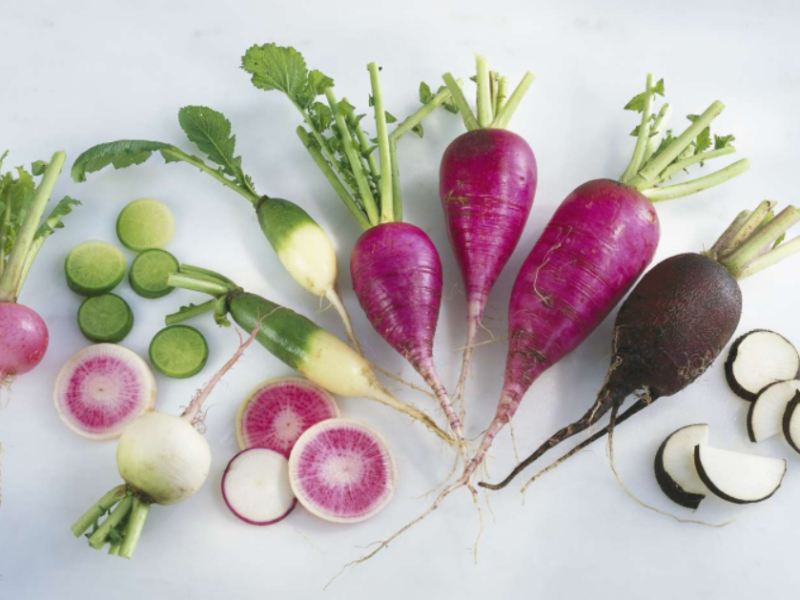The edible corm known as taro root (Latin: Colocasia Esculenta) is a member of the Araceae plant family. Albi, Arbi, Talo, Dalo, Kalo, Aba, and Aro are some of its other names.
Tropical areas including Southern India, Southeast Asia, Japan, Hawaii, and Polynesia are where it is primarily grown. It contains a variety of vitamins and minerals, including fiber, complex carbohydrates, iron, calcium, magnesium, zinc, potassium, copper, manganese, and phosphorus.
The dietary fiber in taro roots makes up around 12% of its total carbohydrate content. Dietary fiber is a type of non-digestible carbohydrate that regulates blood sugar levels, metabolism, digestion, and cardiovascular health.
A healthy starch to fiber ratio is 6:1, which has a modest sugar content but a large proportion of slowly metabolizing carbs. The typical taro root contains around one-fourth of the daily fiber intake suggested for adults.
Find out more about: Breakfast Reduces Blood Sugar, Cholesterol, and Weight
100g of cooked, unseasoned taro root has the following benefits:
- Vitamin B1: 9% RDA
- Vitamin B2: 2% RDA
- Vitamin B3: 3% RDA
- Vitamin B5: 7% RDA
- Vitamin B6: 25% RDA
- Vitamin B9: 5%
- Vitamin C: 6% RDA
- Vitamin E: 20% RDA
- Vitamin K: trace
- Calcium: 2% RDA
- Iron: 6% RDA
- Magnesium: 8% RDA
- Manganese: 21% RDA
- Phosphorous: 11% RDA
- Potassium: 10% RDA
- Zinc: 3% RDA
- Energy: 142 calories
- Protein: 0.5g
- Fat: 0.1g
- Carbohydrates: 34.60g
- Fiber: 5.1g
- Sugars: 0.5g
Additionally, it has a lot of antioxidants including beta-carotene and cryptoxanthin.
It can be used similarly to potatoes but is healthier because it contains more nutrients and has a lower Glycemic Index. Additionally, compared to potatoes, it has 30% less fat and three times as much fiber.
This beneficial root strengthens the immune system while promoting blood health and boosting digestive health, metabolic efficiency, and nutrient absorption. It also increases the likelihood that diets will be successful.
Moreover, it enhances bone and heart health, fights anemia, provides energy and strength for good aerobic exercise, and improves enzyme function.
Taro root has been traditionally used to eliminate toxins and poisonous waste from the body.
In the form of a pack compress, it can be applied to treat:
- cysts, fibromas (benign tumors) and lymphatic swelling
- Ear infections
- Inflammation of any kind
- strains, sprains, and edema
Here is how to use it topically:
Treating Joint and Arthritis Pains and Earaches With Taro Root Plaster Bandages
Peel a taro root, grate the white interior, and apply it to the skin to reduce the discomfort. Give it a cotton gauze covering and give it two hours to work.
Taro Root and Ginger Plaster to Cure Cysts And Fibromas
Peel a taro root, grate the white interior, and combine it with 5% grated fresh ginger to treat fibromas and cysts. After that, apply the mixture directly to the cyst’s skin, wrap it in cotton gauze, and give it four hours to work. Reduce the amount of ginger if you get skin burning. for two weeks, repeat each day.
Additionally, the consumption of taro root has been found to:
- Prevent menstrual and other muscle cramps
- Strengthen the bones and connective tissues
- Improve vision and treat cataracts and macular degeneration
- Improve digestion and ensure regular bowel movements
The taro root, however, cannot be consumed uncooked due to its high calcium oxalate content. The best thing to do before cooking it is to let it soak in water all night.
It tastes earthy, nutty, sweet, and mild. It can be sliced into slices and baked to make wonderful chips, or it can be chopped into cubes and cooked in curry.
The taro leaves and root can also be boiled, roasted, or cooked and added to soups or meat dishes. You could also juice it, but keep in mind that, while perfectly harmless, the juice may slightly hurt some people’s skin.



